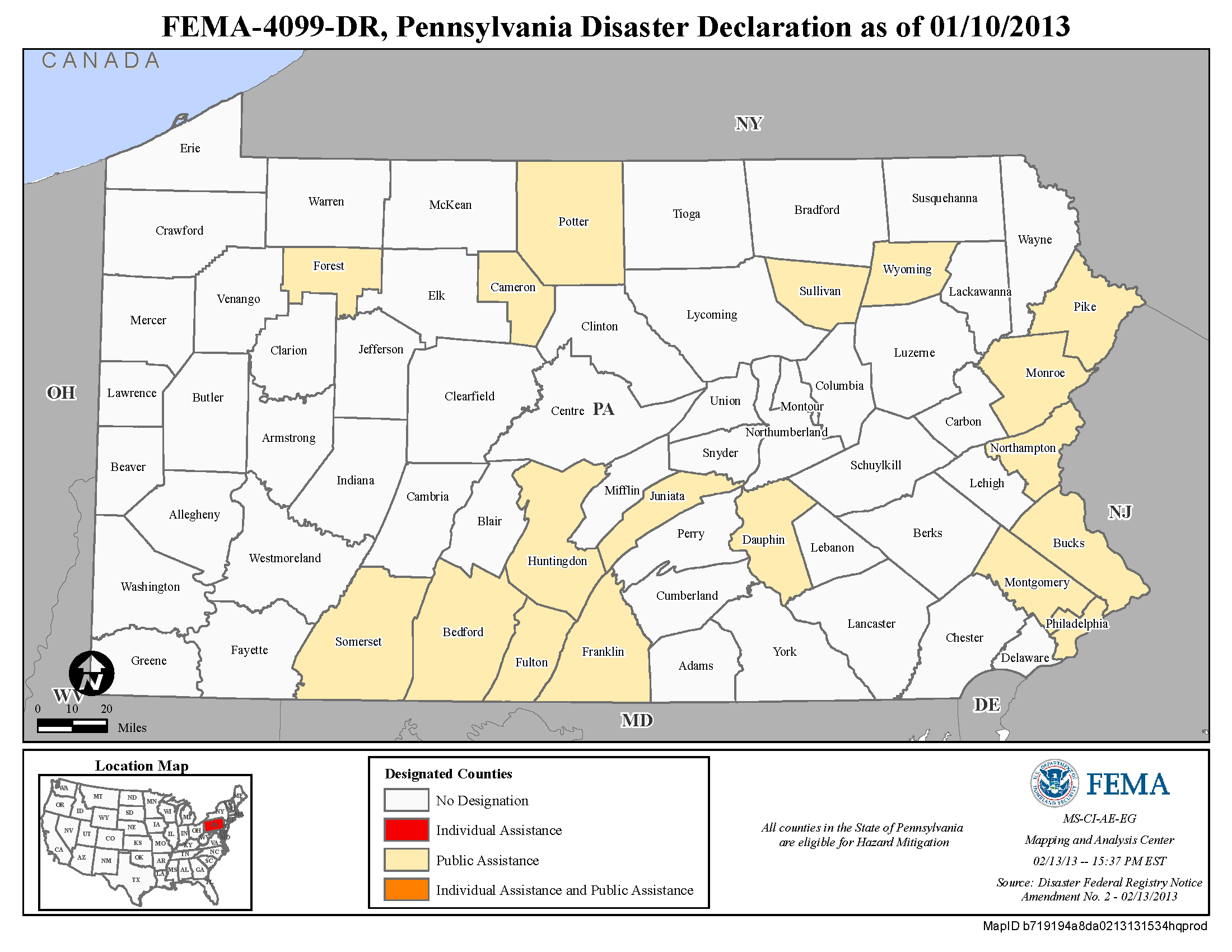Disaster Planning for Historic Properties Initiative
Integrating Hazard Mitigation and Historic Preservation Planning
Throughout
Pennsylvania’s early development, our communities settled along the banks of
the commonwealth’s more than 86,000 miles of streams. During this time rivers
and creeks functioned not only as a vital source of sustenance, but also as
sources of industrial power and the backbone of the Keystone State’s first
transportation and commerce networks. Abetted by the effects of climate change
and recent upstream development, Pennsylvania’s early settlement patterns have
now led many of our oldest communities to become increasingly flood-prone. The
Pennsylvania Emergency Management Agency (PEMA) has identified flooding as the
single greatest natural threat to life and property in each of the state’s 67
counties, a threat which is only expected to become more severe in future years
as heavy rainfall events become more frequent and intense.
While
Pennsylvania’s historic river towns have been mostly resilient in the wake of
several catastrophic floods, these communities may not fare as well in the
future. Recent reforms to the National Flood Insurance Program have already led
to drastic increases in flood insurance premiums for owners of flood-prone
properties, making it infeasible for many residents and business owners in
historic river towns to remain in their homes and places of business. This
change threatens the building stock and community fabric of historic districts
throughout the state.
In the wake of several major disaster events in recent years including hurricanes Sandy and Irene and tropical storm Lee, the Pennsylvania State Historic Preservation Office (PA SHPO), the Pennsylvania Emergency Management Agency (PEMA), and the Federal Emergency Management Agency (FEMA) have recognized that the capacity to assess damage to historic properties during the disaster response and recovery phases and evaluate hazard mitigation actions during the disaster planning phase is often hampered by a lack of consistent and up-to-date information on historic properties in hazard-affected areas.
PA SHPO has also recognized that to date, throughout the commonwealth, considerations for older and historic properties have been overwhelmingly absent in county hazard mitigation plans, despite the important contributions Pennsylvania's older and historic places make to communities' overall quality of life, economy, unique cultural identity, and sense of place.
Hurricane Sandy Recovery
On the evening of October 29, 2012, Hurricane Sandy made landfall in southern New Jersey, with impacts felt across more than a dozen states.
On the evening of October 29, 2012, Hurricane Sandy made landfall in southern New Jersey, with impacts felt across more than a dozen states. The storm battered the East Coast and Pennsylvania with heavy rain and strong winds. The following eighteen counties in Pennsylvania received federal disaster declarations:

- Bedford
- Bucks
- Cameron
- Dauphin
- Forest
- Franklin
- Fulton
- Huntingdon
- Juniata
| - Monroe
- Montgomery
- Northampton
- Philadelphia
- Pike
- Potter
- Somerset
- Sullivan
- Wyoming
|
As part of the Disaster Relief Appropriations Act (P.L. 113-2), designed to streamline disaster assistance related to Hurricane Sandy, the National Park Service awarded more than $7.6 million in grants to eight states. Early in 2014 the Pennsylvania Historical and Museum Commission (PHMC) was awarded $1.5 million to help stabilize or repair historic properties damaged by Hurricane Sandy and undertake disaster-related planning initiatives.
Hurricane Sandy Disaster Relief funds in Pennsylvania are being used to:
- Integrate disaster planning into historic resource survey;
- Incorporate and prioritize historic properties into hazard mitigation planning at the state and county levels;
- Develop model guidance related to historic properties;
- Offer grants to property owners and nonprofit organizations for reimbursing the costs associated with repairing National Register eligible or listed historic properties damaged by Hurricane Sandy;
- Provide training and educational programs on disaster-related topics.
The National Park Service has negotiated a Programmatic Agreement with each of the states and tribal organizations awarded funds for historic preservation disaster relief projects in the wake of Hurricane Sandy. The Agreement governs the project review process for Pennsylvania's programs, including provisions for public notification and involvement. It also expressly prohibits use of the funds for work that would adversely affect historic properties. View the Hurricane Sandy Programmatic Agreement (PDF), signed by representatives of the National Park Service, the Advisory Council on Historic Preservation, and PA SHPO.
View the Hurricane Sandy Grant and Cooperative Agreement (PDF), a contract between the National Park Service and PA SHPO. The Agreement outlines each of the special conditions of the Hurricane Sandy Disaster Relief program and clarifies PA SHPO's responsibilities as stewards of the federal funds.
Contact Information
For
more information about the Pennsylvania State Historic Preservation Office’s Disaster
Planning for Historic Properties Initiative, please email Hurricane Sandy
Recovery Project Manager.
John Gardosik
(717) 787-0771
Submission Notice
Please Note: By submitting materials with respect to state or federal historic preservation programs administered by the Pennsylvania Historical and Museum Commission (PHMC), you grant to the PHMC the rights to:
- use the materials for education and promotional purposes and to promote the mission of the PHMC;
- publish the materials on the PHMC Web site; and
- make the materials available to researchers and scholars.